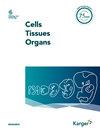球状-水凝胶一体化仿生系统(SHIBS):先进三维细胞培养技术的新前沿。
IF 1.9
4区 生物学
Q1 ANATOMY & MORPHOLOGY
引用次数: 0
摘要
背景尽管三维(3D)细胞培养技术取得了重大进展,但创建能忠实再现复杂体内环境的精确体外模型仍是生物医学研究中的一大挑战。传统的培养方法往往无法同时促进关键的细胞-细胞和细胞-细胞外基质(ECM)相互作用,同时提供对机械和生化特性的控制。摘要 本综述介绍了球形-水凝胶集成仿生系统(SHIBS),这是一种突破性的方法,它将球形培养与定制的水凝胶技术协同结合在一起。通过对细胞相互作用和环境特性进行前所未有的控制,SHIBS 在传统培养方法和生理条件之间架起了一座独特的桥梁。我们将探讨 SHIBS 如何彻底改变从药物发现和疾病建模到再生医学和基础生物学研究等领域。综述讨论了 SHIBS 技术目前面临的挑战,包括可重复性、可扩展性和高分辨率成像,并概述了正在进行的解决这些问题的研究。此外,我们还展望了 SHIBS 未来向更复杂的类器官-水凝胶集成仿生系统(OHIBS)的发展,以及它与微流控、三维生物打印和人工智能等尖端技术的整合。它在加速各生物医学领域个性化疗法的开发方面潜力巨大。虽然挑战依然存在,但 SHIBS 技术的不断进步有望克服当前的局限性,为建立更准确、更可靠的体外模型铺平道路。未来,SHIBS 与新兴技术的整合可能会彻底改变生物仿生建模,从而有可能减少动物试验的需求并加快药物发现过程。这篇全面的综述让研究人员和临床医生全面了解了 SHIBS 技术、其当前的功能及其在推动生物医学研究和治疗创新方面的未来前景。本文章由计算机程序翻译,如有差异,请以英文原文为准。
Spheroid-Hydrogel Integrated Biomimetic System (SHIBS): A New Frontier in Advanced 3D Cell Culture Technology.
BACKGROUND
Despite significant advances in three-dimensional (3D) cell culture technologies, creating accurate in vitro models that faithfully recapitulate complex in vivo environments remains a major challenge in biomedical research. Traditional culture methods often fail to simultaneously facilitate critical cell-cell and cell-extracellular matrix (ECM) interactions while providing control over mechanical and biochemical properties.
SUMMARY
This review introduces the spheroid-hydrogel integrated biomimetic system (SHIBS), a groundbreaking approach that synergistically combines spheroid culture with tailored hydrogel technologies. SHIBS uniquely bridges the gap between traditional culture methods and physiological conditions by offering unprecedented control over both cellular interactions and environmental properties. We explore how SHIBS is revolutionizing fields ranging from drug discovery and disease modeling to regenerative medicine and basic biological research. The review discusses current challenges in SHIBS technology, including reproducibility, scalability, and high-resolution imaging, and outlines ongoing research addressing these issues. Furthermore, we envision the future evolution of SHIBS into more sophisticated organoid-hydrogel integrated biomimetic systems (OHIBS) and its integration with cutting-edge technologies such as microfluidics, 3D bioprinting, and artificial intelligence.
KEY MESSAGES
SHIBS represents a paradigm shift in 3D cell culture technology, offering a unique solution to recreate complex in vivo environments. Its potential to accelerate the development of personalized therapies across various biomedical fields is significant. While challenges persist, the ongoing advancements in SHIBS technology promise to overcome current limitations, paving the way for more accurate and reliable in vitro models. The future integration of SHIBS with emerging technologies may revolutionize biomimetic modeling, potentially reducing the need for animal testing and expediting drug discovery processes. This comprehensive review provides researchers and clinicians with a holistic understanding of SHIBS technology, its current capabilities, and its future prospects in advancing biomedical research and therapeutic innovations.
求助全文
通过发布文献求助,成功后即可免费获取论文全文。
去求助
来源期刊

Cells Tissues Organs
生物-发育生物学
CiteScore
4.90
自引率
3.70%
发文量
45
审稿时长
6-12 weeks
期刊介绍:
''Cells Tissues Organs'' aims at bridging the gap between cell biology and developmental biology and the emerging fields of regenerative medicine (stem cell biology, tissue engineering, artificial organs, in vitro systems and transplantation biology). CTO offers a rapid and fair peer-review and exquisite reproduction quality. Special topic issues, entire issues of the journal devoted to a single research topic within the range of interests of the journal, are published at irregular intervals.
 求助内容:
求助内容: 应助结果提醒方式:
应助结果提醒方式:


